The Future of Food
Modernising Diet for Climate Change
Through my documentary I hope to carry the audience down this narrative stream. Dairy farming used to be sustainable on a small scale.
As it has expanded massively, so have the ecological impacts. This is harming our planet, throwing the environment in chaos. To aid the environment, we must shrink this industry.
Every single person can contribute to the solution by decreasing the amount of meat and dairy products in their diet. If this happens, we allow the environment to rejuvenate and we can live in harmony with the natural world. If this doesn’t happen, ecological destruction will continue to occur on a large scale.
this project aims to explore impacts of the dairy industry on:
- ecosystem
- economy
- community
find out more about UK dairy farming here.

This image shows a sheep perched precariously on a mountain on the Welsh side of the border between England and Wales. It aims to capture an example of where livestock rearing can be useful and natural without causing excess damage to the environment. There is a natural lighting and no manipulation to the image. Resilience of such animals is the mood captured, conveying that they do not need to be involved in the industrialized farming system to thrive, and rewilding can be a valid option.

This image sets the scene for my story by capturing a wide shot of the setting of an agricultural landscape in Hereford. It contains multiple strong lines to represent the different stages of my story, with the main subject of the farmland placed between the lower third and upper third. The layer of dark clouds at the top presents the danger of accumulated greenhouse gasses in the atmosphere, intended to be imposing with its thick texture and dark grey ominous colour.

This is an image of forestry equipment in the depths of the ancient forest of Aconbury in Hereford. The contrast of the heavy machinery and ethereally lighted forest setting is supposed to represent the conflict between nature and the machine world The scale and beauty the forest, compared to the machines, demands respect from the viewer, hopefully inspiring them to consider how they can cooperate in its rejuvenation.

This image captures a plot of grassland in Hereford used for rearing cattle. It is a wide shot to capture as much of the land as possible in order to give the viewer a sense of the scale. Blue tones are highlighted slightly to enforce a sense of coldness and emptiness that comes from grazing cattle on large areas of grassland. The negative space surrounding the cattle is also a demonstration of this.

The subject of this image is the Wye River, foregrounded by cattle manure on a field bordering the river. The drab, earthy colour in this image is an important aspect, especially the matching brown tones between the manure and river. Not only does this emphasize the pollution of the river but creates a perceived relationship between the two subjects. By foregrounding the manure, I hope to induce a sense of disgust in the viewer. This disgust instinct will hopefully motivate them to decrease their meat and dairy intake through the connection between this and river pollution.

The meat and dairy section of a ‘Sainsburys Local’ in Manchester is presented here. This is an extremely common and relatable image for the average person to experience. The fact this is the case shows how over-consumed meat and dairy is in the UK. However the image here has been desaturated to elucidate the lifeless future of this particular section of nearly all supermarkets. By ending with this image, it presents a familiar situation to the viewer. When facing this image in their own routine, they are presented with a consumer choice which can either contribute to ecological and climate breakdown or contribute to the solution.








